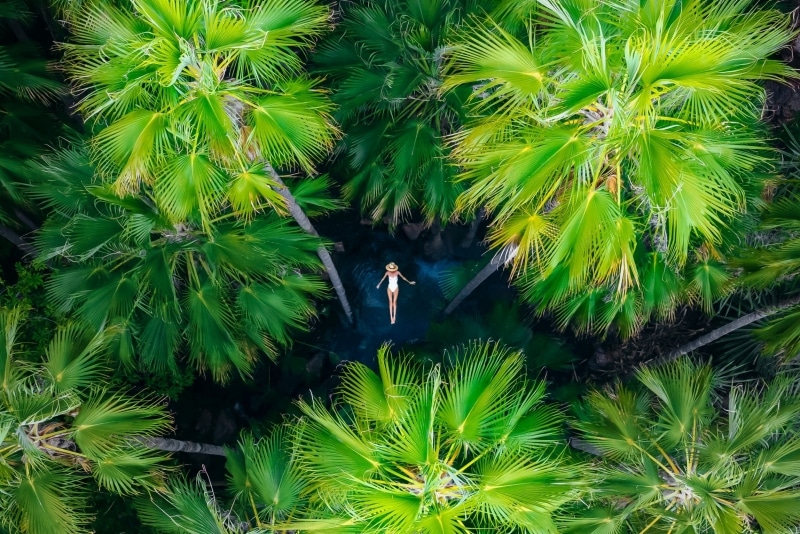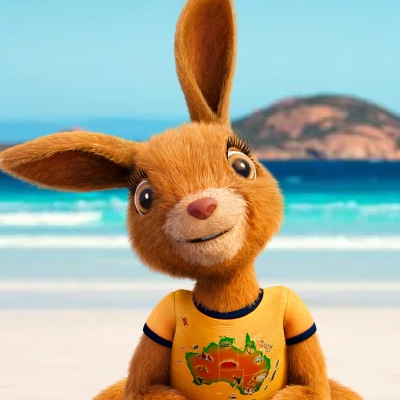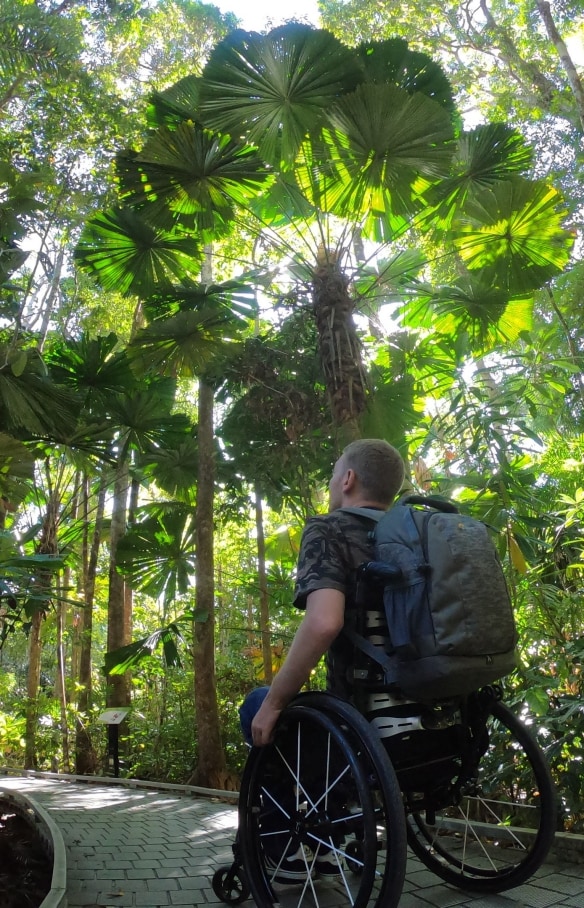
Accessible ways to experience Australia’s icons
Visitors of all abilities can explore Australia’s must-visit destinations and instantly recognisable landmarks.
Sydney Harbour is home to some of Australia's most recognisable icons, including the Sydney Opera House and Sydney Harbour Bridge. The Sydney Opera House aims to provide access to everyone and offers daily Mobility Access Tours for visitors with limited mobility, as well as 'relaxed' performances for those with sensory sensitivities. Hearing-impaired visitors can scale the city's iconic bridge on a guided climb with commentary in Australian sign language. Across the harbour, Taronga Zoo makes iconic Aussie wildlife accessible to everyone.
The impressive Remarkable Rocks on Kangaroo Island have been shaped by wind and sea spray for some 500 million years. Visitors with limited mobility can easily marvel at this natural wonder via an accessible boardwalk. There are also accessible toilets and parking nearby. Book a tour with Exceptional Kangaroo Island for an incredible local's view of the beautiful island.
Some of Tasmania's most breathtaking views sit within Cradle Mountain-Lake St Clair National Park. Visit the Dove Lake viewing shelter for panoramic vistas. Have a chat with Cradle Mountain Canyons about a Dove Lake Kayak tour; they work to make kayaking the spectacular lake as accessible as possible. A two-hour circuit of the lake will make your jaw drop as you pass dense rainforest and craggy mountains from the tranquil lake.
Immerse yourself in Australia’s laidback beach culture at Bondi Beach, one of the country’s most famous strips of sand. The promenade above the beach provides level access for wheelchair users, and WheelEasy's guide to Bondi Beach outlines helpful tips to get you on the sand. Visit Bondi as part of Australia in Style's wheelchair-accessible Sydney Sightseeing tour, or make the most of your visit to Bondi Beach by taking a surf lesson with Let’s Go Surfing. Instructors will try to help anyone get on a board – simply give them a call and discuss your needs.
The stunning landscapes and charming villages of the Blue Mountains, located west of Sydney, are accessible for visitors with limited mobility. Download the Accessible Blue Mountains fact sheet for detailed listings of accessible accommodation, restaurants, lookouts, bushwalking trails and more. Book Australia in Style’s full-day Blue Mountains Wheelchair Tour and you’ll be transported from Sydney to the World Heritage-listed Greater Blue Mountains in a private vehicle. On your own, you can wander the wheelchair-friendly Three Sisters Walk and soar through the skies on the wheelchair-accessible cable car at Scenic Skyway.
There are plenty of services to help travellers with disabilities experience the wonders of the Great Barrier Reef. Find accessible accommodation and tours that work for you, or arrange a bespoke itinerary with inclusive travel specialists TravAbility. Operating out of the marina at Port Douglas, an easy one-hour drive from Cairns, Quicksilver Cruises offers a number of wheelchair-friendly cruises to the reef. Quicksilver operates a wheelchair lift at its Agincourt Reef platform to facilitate access to the ocean and offers accessible scuba diving courses at the PADI adaptive facility.
Rottnest Island takes pride in being an accessible destination for all travellers. The island is rich with pristine blue waters, white sandy beaches and calming greenery, all mindfully equipped with accessible pathways and facilities. It’s the resident quokkas that really make this picturesque place an Australian icon – the adorable little marsupials far outnumber people living on the island, so you’re bound to come across their smiling faces. SeaLink Rottnest Island operates wheelchair-accessible vessels to the island from Perth, and a range of mobility equipment is available from Pedal & Flipper Hire upon arrival.
While based in Cairns, you can explore 130 million years of natural treasures in the magnificent Daintree Rainforest. Explore the most accessible sections of this incredible ancient wilderness on wheelchair-friendly trails through Mossman Gorge. Extend your stay in Cairns and visit the nearby mountain village of Kuranda. Arrive via the wheelchair-friendly SkyRail Rainforest Cableway the or Kuranda Scenic Railway, and don’t miss the Rainforestation Nature Park to experience local Aboriginal practices and traditions.
There are a number of accessible options for exploring Australia’s Red Centre. Discover the sacred Standley Chasm on a wheelchair-accessible path and dive into the Aboriginal artworks on display at Araluen Arts Centre in Alice Springs. Most of the walking tracks in Uluru-Kata Tjuta National Park are wheelchair accessible, with grades ranging from easy to moderate. Travellers who are blind or have low vision can hire an Uluru audio guide with more than 100 stories detailing the geology of the monolith and the culture of the Anangu people, the Traditional Custodians of Uluru. If you’d like to let someone else do the planning, TravAbility can arrange your perfect itinerary for the Red Centre, and wheelchair users can tailor a charter tour to Uluru with Outback Tour Services.
One of the world’s greatest coastal drives, the Great Ocean Road stretches for 243km (151mi) from the town of Torquay, just over a one-hour drive from Melbourne, to the charming fishing village of Port Fairy. Wheelchair users can download the 12 Apostles Accessibility Guide for information on visiting the Great Ocean Road’s 12 Apostles, a series of striking limestone pillars emerging from the Southern Ocean. Explore a section of the Great Ocean Walk in an all-terrain wheelchair from Apollo Bay Visitor Information Centre, or pay a visit to the wheelchair-accessible Wildlife Wonders sanctuary, where audio headsets and binoculars are available for spotting sleepy koalas.
About a two-hour drive from Melbourne, the natural wonderland of Phillip Island is a leader in inclusive and accessible experiences. Phillip Island attractions are accessible for guests with sensory sensitivities as well as travellers with limited mobility. The nightly Penguin Parade, during which hundreds of little penguins waddle along the beach to their burrows, is accessible for travellers with limited mobility and is a certified sensory-inclusive site, with dedicated equipment and quiet spaces available. The island’s Koala Conservation Reserve also caters for guests with both sensory sensitivities and mobility needs.





















































































































































































